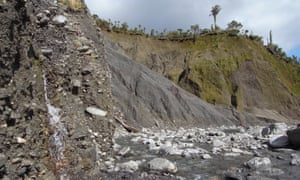
Climate change hit the headlines again last week during the Paris climate summit. The speed at which we have burned fossil fuels and increased the proportion of greenhouse gases in Earth’s atmosphere is staggering. But we are far from the first to wreak climate havoc on our planet.
A mind boggling 2800 million years ago photosynthesising bacteria began to flourish, using sunlight to convert carbon dioxide and water into food, and producing oxygen as waste. Their success rebalanced Earth’s atmosphere, increasing oxygen and reducing greenhouse gases. The result was one of Earth’s most severe ice ages – the Huronian glaciation – which lasted 300 million years.
Leaping forward to 470 million years ago, the first moss-like plants crept onto land. The acids they secreted dissolved the rocks they clung onto, and this weathering sucked carbon dioxide out of the atmosphere, triggering yet another ice age and a mass extinction. Roll on to 375 million years ago, and the same thing happened again – this time when rooted plants marched onto land and increased rock weathering.
Weathering of rocks can have ferocious climate consequences – it has tipped Earth into ice ages many times in the past, including the infamous “Snowball Earth” around 700 million years ago. So could rock weathering be our climate salvation today? According to a paper published last week in Nature Geoscience, landslides significantly accelerate weathering, because of the amount of fresh rock surface that they expose. But even so, we’d need a helluva lot of landslips to get us out of our current climate fix.
http://www.theguardian.com/science/2015/dec/06/rockfall-photosynthesis-climate-change-ice-age
No comments:
Post a Comment